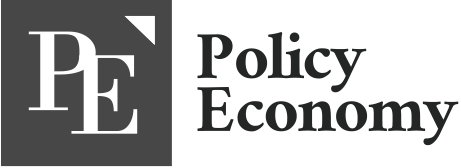[동아시아포럼] 일본의 반도체 재(再)굴기 도전
일본 “다시 반도체 굴기에 나서겠다” 선포 日 정부 2027년까지 글로벌 최상위권 도약 위해 전폭적 지원 약속 미국, EU, TSMC 등의 해외 기관과의 협력 강화도
[동아시아포럼]은 EAST ASIA FORUM에서 전하는 동아시아 정책 동향을 담았습니다. EAST ASIA FORUM은 오스트레일리아 국립대학교(Australia National University) 크로퍼드 공공정책대학(Crawford School of Public Policy) 산하의 공공정책과 관련된 정치, 경제, 비즈니스, 법률, 안보, 국제관계에 대한 연구·분석 플랫폼입니다.
지난 5월 일본 히로시마에서 열린 G7 정상회담에서 주요국 정상들은 경제 회복 및 경제 안보를 위해 반도체를 비롯한 주요 핵심 상품에 대한 공급망을 강화할 것을 결의한 바 있다.

해당 협력은 지난 2021년부터 가속화된 일본의 반도체 재(再)굴기와도 직접적으로 맞닿아 있다. 일본은 지난 2021년부터 공급망 안정성을 확보하고 주요 핵심 상품에 대한 대외 의존도를 낮추는 일환으로 반도체 산업에 다시 뛰어들겠다고 천명했다.
반도체 산업 혁신 및 새로운 반도체 생태계 구축
일본은 올해 들어 국내 반도체 생산력을 강화하는 것과 더불어, 국제 협력을 통해 미래 반도체 기술을 확보하기 위해 대규모 연구개발(R&D) 비용을 지불하고 있다. 대규모 재정 지출이 진행되는 가운데, 해외 각국들은 일본이 반도체 산업을 혁신하고 새롭게 반도체 생태계를 구축하려는 시도 중이라고 해석한다. 스마트폰에서부터 국가 안보까지 반도체가 다양한 곳에 이용되고 있는 만큼 해외 일부 국가들의 반도체 공급망에 의존하는 것보다 안보 위협을 크게 낮출 수 있을 것이라는 기대감이 일본 정부 관계자들 사이에 깔려 있는 상태다.
앞서 일본은 지난 2021년과 2022년 70억 달러(약 9조3,737억원)에 달하는 정부 예산을 반도체 설비 공장에 투자했다. 당시 관계자들은 해외 기업뿐만 아니라 일본 기업마저도 대규모 정부 보조가 없었다면 일본이 아닌 타국에 설비 공장을 지었을 것이라고 평했다. 지난 5월에는 7개 주요 반도체 기업 관계자들이 기시다 총리와 만나 일본 내 반도체 공정 투자에 합의하기도 했다. 일본 내에서는 총리와 주요 기업 관계자들의 면담이 향후 일본 내 반도체 투자 확대의 주춧돌이 될 것으로 내다봤다.
일본 정부는 반도체를 ‘주요 핵심 물질(Specified Critical Materials)’로 선언하고 일본 산업계가 생산 역량을 강화할 수 있도록 지원하겠다는 방침이다. 28억 달러(약 3조7,500억원)에 달하는 예산도 배정됐다. 정부 지원을 통해 일본이 전 세계 반도체 생태계의 주요 국가로 자리매김하고 국내 투자도 이끌어 내겠다는 구상이다.
정부의 재정 지원에 이은 제도적 지원
일본 경제산업성 산하의 산업혁신투자기구(JIC)는 반도체 원재료 중 하나인 포토레지스트(감광재) 1위 기업 JSR를 국유화하기로 결정했다. 그간 삼성전자가 칩 위탁생산을 위해 갖고 있던 지분을 전량 일본 정부가 인수한 것이다. 64억 달러(약 8조5,754억원)에 달하는 인수가액에도 불구하고 일본 정부가 직접 나선 것은 전 세계 약 30%의 포토레지스트 시장을 JSR이 장악하고 있긴 하나, 지분 상당량이 글로벌 주요 반도체 기업에 흩어져 있기 때문이다.
가치 사슬 내의 주요 기업 지분을 인수하는 것과 더불어, 정책적인 지원에도 나섰다. 한국, EU, 미국, 인도 등의 주요 국가와 협력해 반도체 설비 공정에 필요한 미래 기술에 대한 도전을 지원하는 방식이다. 그간 반도체 관련 주제로 해외 국가들과 협력을 거부해 왔던 일본이 적기(適期)에 전향적인 태도를 취하자 관계자들은 놀랍다는 반응이다.
지난해 12월에는 ‘기술연구조합 최첨단 반도체기술센터(LSTC)’를 구축해 일본 내의 주요 반도체 관계자들이 협력할 수 있는 공공 기관을 설립하기도 했다. 이를 통해 글로벌 주요 R&D 관계자들과의 협력도 도모한다는 방침으로, 센터는 차세대 반도체 기술을 연구하고 미국 국가반도체기술센터(NSTC) 및 EU 마이크로일렉트로닉스 센터(IMEC)와의 협력도 강화할 예정이다.
국내외 협력도 강화, 생존 가능성은 여전히 정부의 장기 지속적인 의지에 달려 있다
일본산업기술총합연구소(NIAIST)는 2나노 칩 생산을 위해 국내외 업체들과 협력하는 데 이어 대만의 TSMC와의 협력도 강화할 방침이다. TSMC와 3차원 반도체를 연구해 최소 10년 이상 앞서있는 글로벌 시장 반도체 선두 그룹 기업들을 추격하겠다는 복안이다.
이어 IBM및 IMEC와 협력을 통해 차세대 반도체 양산센터인 라피더스(Rapidus)도 확보한다. 라피더스는 2027년에 2나노 칩을 대량 생산할 계획으로, 지난해와 올해 2년에 걸쳐 일본 정부로부터 23억 달러(약 3조818억원)의 지원금을 받았다. 그러나 라피더스가 실리콘 웨이퍼 제조 공정을 보유하고 있지 않은 상황이라 기술력이 현실화되는 데는 상당한 시일이 걸릴 전망이다. 반도체 업계 관계자들은 라피더스가 그간 반도체 설계에 집중했던 기업인 만큼 R&D 기반의 연구 기업이 생산성을 확보할 수 있을지 주의 깊게 지켜봐야 한다고 진단했다.
다만 지난 1970년대부터 2000년대까지 몇 차례에 걸쳐 LSTC와 유사한 정부 지원 업체가 등장했음에도 불구하고 정형화된 기술 및 생산 설비가 반복적으로 나타나면서 글로벌 시장에서의 경쟁력을 확보하지 못했던 점은 문제점으로 지목된다. 글로벌 경쟁 환경에서 정형화된 기술을 고집할 경우 시장의 변화를 효율적으로 따라갈 수 없기 때문이다. 이와 관련해 일본 정부는 다양성 확보를 위해 7개 반도체 관련 기업들이 다양한 방식으로 기술 개발에 나설 수 있도록 돕겠다고 선언했다.
관계자들은 정부 지원에 철저하게 의존한 굴기인 만큼 일본 정부가 장기적인 투자에 나서야 한다고 지적하며, 상황에 맞는 정책 유연성을 갖출 것을 주문했다.
Japan’s semiconductor revival
At the G7 Hiroshima Summit in May 2023, leaders declared in a statement on economic resilience and economic security that they would strengthen supply chains for critical goods, including semiconductors, through global partnerships.
![]()
This commitment reaffirms Japan’s efforts — starting in 2021 — to revitalise its domestic semiconductor industry, reduce its dependence on other countries for critical goods and build a resilient supply chain.
Two key elements of Japan’s semiconductor strategy for 2023 include strengthening domestic manufacturing capability and fostering research and development (R&D) for next-generation semiconductor technology through international collaboration. This ambitious approach aims to transform Japan’s semiconductor industry and demonstrates the government’s determination to revive its semiconductor ecosystem.
The Japanese government aims to increase domestic semiconductor manufacturing capacity by providing subsidies to companies engaged in the production of advanced semiconductors. Given that semiconductors are used in everything from cellphones to defence systems, expanding Japan’s domestic capability will be crucial for reducing the risk of dependence on unreliable sources of supply as well as the risk of becoming overly reliant on a few countries.
In 2021 and 2022 the government set aside more than 1 trillion yen (close to US$7 billion) for semiconductor manufacturing plants. Without this, Japanese and foreign firms would likely choose more attractive locations to manufacture semiconductors. In May 2023, top executives of seven foreign semiconductor companies met with Prime Minister Fumio Kishida to exchange views on expanding investment in Japan. This step is expected to further secure the semiconductor manufacturing base.
Semiconductors were also designated ‘specified critical materials’ to strengthen the ability of Japanese industry to manufacture legacy semiconductors and produce the required manufacturing equipment and materials. This resulted in a total budget of 368.6 billion yen (US$2.8 billion). These support measures aim to maintain Japan’s presence in the global semiconductor ecosystem and induce additional private sector investment.
Beyond financial support, the Japan Investment Corporation (JIC)—a government-affiliated fund overseen by the Ministry of Economy, Trade and Industry—has taken a significant step by acquiring the chip-materials producing firm JSR through a takeover bid of approximately 900 billion yen (US$6.4 billion). JSR holds a roughly 30 per cent share of the global market for photoresists that are required to manufacture semiconductors. The acquisition will enable JSR and JIC to restructure Japan’s semiconductor materials industry through large-scale mergers and acquisitions to increase the competitiveness of Japan’s semiconductor materials companies.
While industrial policy alone will not be enough to reinvigorate Japan’s domestic semiconductor industry, the government can work to ensure its industrial policies contribute to the success of the industry. This work will require close engagement with semiconductor companies and other stakeholders, an examination of the successes and failures of industrial policy efforts and the modification of policies as needed.
The Japanese government’s semiconductor strategy also emphasises strengthening Japan’s next-generation semiconductor technology base through international collaboration. Other technology-driven nations — including European countries, the United States, South Korea and India — are launching policies to build resilient supply chains for semiconductors. This is an opportune time for Japan to pursue collaboration with other countries.
In December 2022, Japan established the Leading-edge Semiconductor Technology Center (LSTC), which is supported by public research institutions in Japan and serves as an R&D hub for scientists worldwide. At the LSTC, researchers will explore new technologies for next-generation semiconductors based on the needs of domestic and foreign industries. It is expected that the National Semiconductor Technology Center and the Interuniversity Microelectronics Centre (IMEC) will collaborate with the LSTC on advanced semiconductor technologies.
Separately, Japan’s National Institute of Advanced Industrial Science and Technology is working with domestic and overseas semiconductor companies on a project to launch a pilot line of 2-nanometre chips. It is also working with the Taiwan Semiconductor Manufacturing Company (TSMC) to develop an advanced 3D semiconductor packaging technology. These collaborative projects showcase the Japanese government’s ambition to catch up to global leaders that are currently 10 years ahead of Japan in chip manufacturing technology.
The Japanese government has also established Rapidus, a mass-production centre for next-generation semiconductors, in collaboration with IBM and IMEC. Rapidus received 330 billion yen (US$2.3 billion) in financial support from the Japanese government over 2022 and 2023. It aims to start producing 2-nanometre semiconductors in 2027.
But because Rapidus has not built and operated a fabrication facility to date, it will likely take time to realise its potential. It also remains to be seen whether Rapidus’s business model, which is based on R&D sustained by sales revenue, will work.
A cautionary tale is that, from the 1970s to the 2000s, multiple joint research projects similar to the LSTC were undertaken by the Japanese government. These government initiatives initially benefited Japan’s semiconductor industry. But in the long term, Japanese semiconductor companies became less diverse due to the standardisation of their technology and the leveling up of technology among their companies.
This lack of diversity among Japanese semiconductor manufacturers made it difficult for companies to adapt to changes in a competitive environment. To apply the lessons learned from past government initiatives, the LSTC will need to be led by a diverse set of Japanese semiconductor companies, operate flexibly and not be too bound by specific research goals.
The Japanese government’s new semiconductor policy aims to play a significant role in reviving Japan’s semiconductor ecosystem. To implement the strategy successfully, the government must continue to pursue further investment and long-term policies aimed at building a resilient global supply chain. At the same time, the government will also need to work closely with stakeholders and remain flexible in adjusting its policies.
In addition to financial support, the Japanese government is taking a multifaceted approach to strengthen the competitiveness of its semiconductor industry. International cooperation, the establishment of R&D centres and human resource development are all on the table. These efforts are expected to help the Japanese semiconductor industry build a stronger position and contribute to economic resilience at home and abroad.
원문의 저자는 현재 워싱턴 DC에 있는 전략국제연구센터(Center for Strategic and International Studies, CSIS)에서 미국 혁신 재도전 프로젝트를 맡고 있는 토모시게 히데키 연구원입니다.



![[동아시아포럼] 미국의 아시아 전략, 올해도 계속될까](https://policyecon.com/wp-content/uploads/sites/7/2024/04/US-Aisa-Momentum_Eastasiaforum_20240128-768x513.jpg)
![[동아시아포럼] 호주 안보 시스템에 동남아시아 국가들의 지원이 필요한 이유](https://policyecon.com/wp-content/uploads/sites/7/2023/07/DARMAWAN-1-500x333-1.jpg)
![[동아시아포럼] 미-중 갈등, 중국 방해보다 글로벌 경제 침해 효과 더 커](https://policyecon.com/wp-content/uploads/sites/7/2023/07/2023-07-24T085000Z_129446920_MT1SIPA000D5IOFC_RTRMADP_3_SIPA-USA-500x333-1.jpg)
![[동아시아포럼] 중국의 호주 무역 제재에서 얻는 교훈](https://policyecon.com/wp-content/uploads/sites/7/2023/04/picture-37-1581458060_waifu2x_photo_noise2_scale.png)
![[동아시아포럼] 韓-우크라 리튬 파트너십, 유럽 배터리 시장의 대안 될까?](https://policyecon.com/wp-content/uploads/sites/7/2024/03/ukraine_EAF_20240205-768x519.jpg)
![[동아시아포럼] 태평양 도서국들의 오래된 균열과 새로운 주권](https://policyecon.com/wp-content/uploads/sites/7/2024/04/image-1.jpg)
